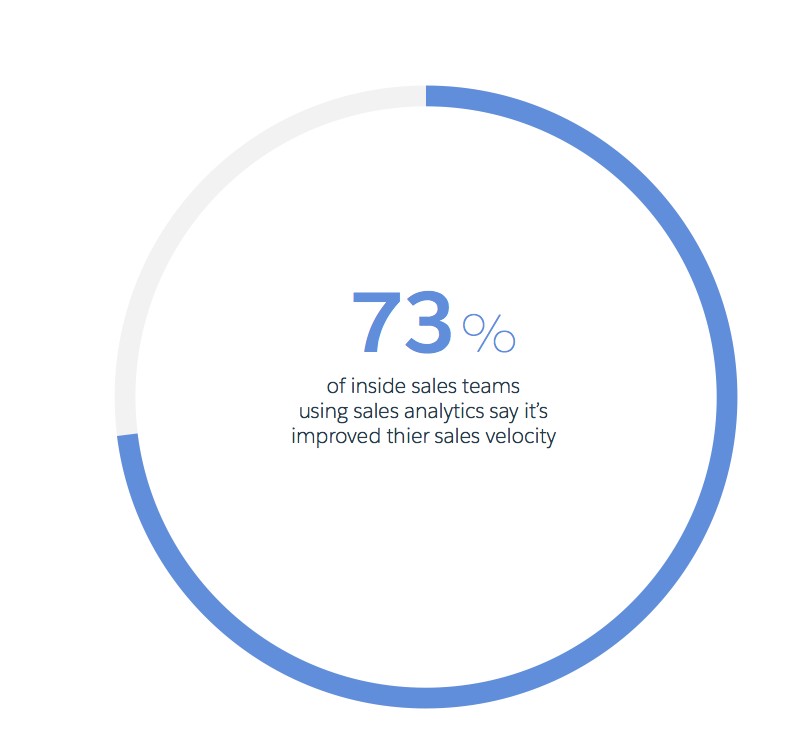
Get your FREE 30-day trial.
Please complete all fields.
The truth is, no customer wants to feel like they’re the target of a sales pitch. Today’s customers expect sales reps to learn, understand, and anticipate their needs — like personal consultants. The “State of the Connected Customer” research found that 79% of business buyers feel it’s very important to interact with a salesperson who’s a trusted advisor adding value to their business. Another 83% feel the same way about sales reps helping them achieve their needs — not just making a quick sale.
But how do inside sales teams, who aren’t meeting face-to-face with their customers, develop that same rapport? How do they juggle creating personal customer connections from afar with the rapid pace demanded by the job?
Salesforce Research conducts regular surveys of sales teams worldwide to answer questions like this — and the many related issues surfacing in a rapidly changing sales environment.
In the shifting technology landscape, being a trusted advisor and a productive sales rep are not two mutually exclusive approaches. Top sales teams, as found in the “State of Sales” research, deliver on both and outperform their competition in a few key ways. These inside sales teams say that being a trusted advisor is among their top five most important objectives over the next 12–18 months.
Here are three sales lessons, revealed by the research, on how high-performing teams are gaining an edge.
Sales lesson #1: Top inside sales teams align with changing customer expectations.
“Change is the only constant,” as they say. High-performing inside sales teams are 1.6x more likely than underperformers to agree their company is mostly aligned on changing customer expectations. Sales teams that stay informed about trends, and remain nimble enough to adapt on the fly, are more likely to succeed.

Today’s business buyers seek smart, human connections when it comes to their relationships with vendors; 89% of business buyers expect companies to understand their business needs and expectations. Sales teams that aren't attuning with these new expectations may find it increasingly hard to compete. To borrow advice from Spencer Johnson, “The quicker you let go of old cheese, the sooner you find new cheese.”
Sales lesson #2: Top inside sales teams sell smarter and more proactively with artificial intelligence (AI).
High-performing inside sales teams are 2x more likely than underperformers to rate their use of predictive intelligence as very good, and 1.8x more likely to already use guided selling, applying AI to give guidance on the next best sales activity for a rep.
At the same time, 79% of inside sales teams have shifted their focus to be more proactive in the past 12–18 months, and 79% say the same for anticipating customer needs. Short of having a crystal ball, these aren’t things that sales teams can improve on their own without tapping into AI and other smart technologies.

Implementing AI for sales and identifying a smarter process is increasingly vital; 75% of business buyers expect that, by 2020, the companies they purchase from will anticipate their business’ needs and make relevant suggestions before they contact them.
Sales lesson #3: Top sales teams use analytics to gain speed and real-time insights.
Analytics can be transformative, especially in areas such as lead quality. The ability to interpret customer and operational data — as well as act on the insights — opens the door to a more efficient, productive sales process. High-performing inside sales leaders rate sales analytics as the number-one technology that has the greatest impact on their sales process. Among all inside sales professionals using sales analytics, 73% say it’s improved their sales velocity.

From the customer perspective, speed is an equally critical component of sales. Eighty percent of business buyers (and 84% of Millennial business buyers) say that their business expects that companies will respond and interact with them in real time.
Keeping pace with customer expectations isn’t without obstacles — but sales teams that ignore these shifts are more likely to underperform and become irrelevant. As intelligent technologies make way for a more efficient inside sales process, top performers are the early adopters exploring AI for sales. They’re the first to accept that today’s customers are different, plan for how they must adapt, and follow through on delivering more proactive, real-time customer experiences.
For more sales lessons from top-performing teams, check out the “State of Sales” research report.